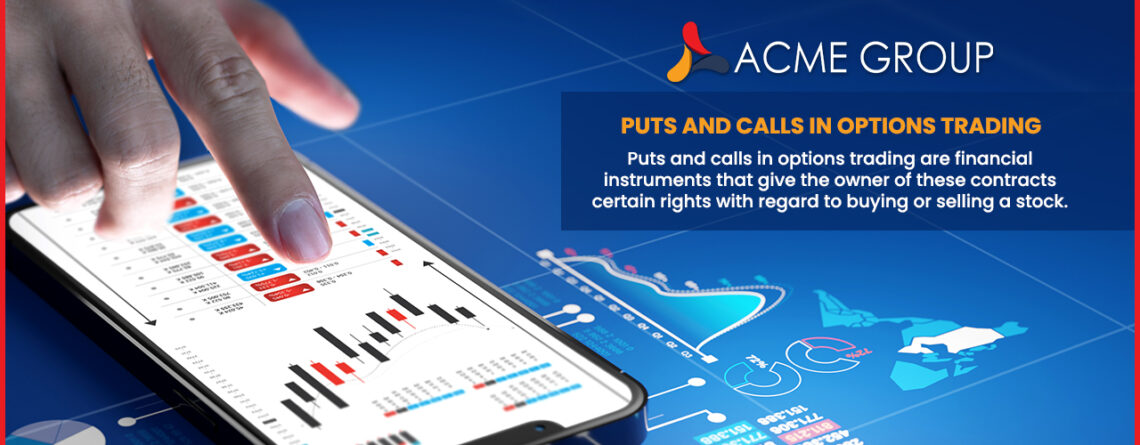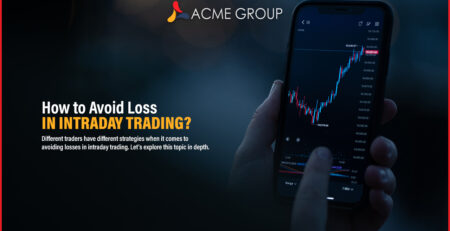Puts and calls in options trading are financial instruments that give the owner of these contracts certain rights with regard to buying or selling a stock.
Calls and puts are the best way for active investors to reduce market volatility, providing them with more control over how they want to invest.
Puts and Calls in Options Trading
Options trading has been happening for years, and traders have been using puts and calls to generate profit. But, what are puts and calls in options trading? They may seem confusing at first, but they’re actually quite simple to understand. A put is a contract that gives the owner the right but not the obligation to sell shares at a specified price. A call is an agreement giving the buyer of this option the right to buy shares from you at a certain price.
Simply put, puts are bets that the value of an asset will decrease, while calls are bets that its value will increase. Put and call options trading is becoming a more popular financial instrument for both derivative traders and investors.
This post will go over the basics of what puts and calls are in trading, how they work with other aspects of trading, and why they are important for your portfolio.
What Are Call and Put Options?
Put and call options are financial instruments that give the owner of these contracts certain rights with regard to buying or selling a stock at an agreed-upon price on (or before) a specified date. Put and call options trading come in two forms: calls, which give you the right to buy stocks, and puts, giving you the option to sell them.
Put options are riskier than calls because they allow investors to benefit from falling prices as well as rising ones while also facing unlimited downside risk if the market share falls too much. On the other hand, calls present limited upside profit potential but protect against catastrophic loss should the share plummet past your stop-loss point. It’s important for any investor considering buying put or call options trading strategies to understand exactly what each strategy entails so he or she can apply the right one to his or her portfolio.
They can be either American style or European style, depending on how long you have until they expire. There are also cash-or-nothing puts/calls, which allow one to take the difference in its underlying asset’s value when it expires instead of buying/selling shares. So, one makes money if prices increase enough for them to outdistance stop-loss levels while still allowing short selling.
How do Call Options Work?
Calls in options trading are the opposite of puts in that you have no rights but are obligated to buy stock shares at a certain price by a predetermined date. This means it is best suited for an investor who already owns 100 shares or more of Google (GOOGL) and wants to make sure they will be able to purchase them back even if their value shoots up above $1000 per share before January 15th, 2022. Calls give you this option without having any real downside risk unless the asset’s market value doubles, triples, quadruples, etc.
This doesn’t seem all too likely given what happened during previous spikes since there is only so much demand available after prices reach such ridiculous levels compared to how little supply most companies are willing to part with even during a spike, let alone after the initial wave of buyers has been satisfied.
Google is an especially good example because any time there was talk about them launching their own cars or smart glasses like what Apple (AAPL) and Microsoft (MSFT) were working on at the time, people would rush out and buy up as many GOOGL shares as they could before it became obvious that none of those launches would be happening anytime soon due to lack of demand for such devices. This is compared to how much money companies need to spend in order to create competitive products vs. simply using Android’s open-source software instead.
How Do Put Options Work?
Put options, just like with most forms of trading, give you the rights but not obligations to sell stock shares at a certain price by a predetermined date. For example, if an investor has put options for 100 shares of Google (GOOGL) at $1000 per share expiring on January 15th, 2022, he would have the option to make money from Google’s drop below that point even though this is something no company wants its shareholders to do. This means that puts are bets against your chosen assets rather than being directly tied to their performance as long as they remain within the contract’s boundaries. The downside here is that you can lose more than your initial investment should the stock’s value decrease dramatically.
It is important to note, however, that put options are not used for short selling as they only give someone the rights but not obligations. This means a trader would have no way of knowing if Google shares were going down and could still be liable for paying off his contract even though he had stopped using it after buying puts against them.
You could not buy or sell stocks without owning at least one share in their company beforehand unless there was some sort of exception involved, such as an employee account where Google sold its own products directly to employees who then bought from them with their work accounts instead of personal ones. In this case, it might make sense to use put contracts to bet against the company you work for instead of buying/selling shares yourself.
So, put options are bets that an asset’s value will decrease over time by a certain date and can be used to make money from market crashes or just simply not participating in your chosen assets’ gains if they continue to perform strongly enough. This is why some traders use puts as insurance policies on their portfolios rather than actually selling off any of their stocks for riskier ones with more potential upside, but also greater downside risks should everything go south very quickly before they have had a chance to recoup what was lost during the initial crash.
Puts help these types of traders reduce overall losses while still allowing them access to potentially higher returns, provided stock prices ever rebound back up again to levels where they can buy them back at a lower cost than what was originally paid.
Options are the best way to reduce portfolio volatility but should never be considered as an investment in themselves since their value is derived from other assets and would drop precipitously if you were unable to make good on your contracts’ obligations when they come due later on down the road. They also allow for greater leverage because of how much cheaper it is to control 100 shares with puts compared to buying/selling them outright yourself within normal trading hours or holding onto short positions overnight instead of simply keeping cash in reserve until there was enough demand again after prices had stabilized sufficiently. Just remember that owning puts doesn’t mean you won’t lose money during market crashes – just significantly less than if you had been holding other assets directly instead.
Similarities Between Puts and Calls
While puts and calls both provide their holders with more control over how they want to invest, the biggest similarity between them is that neither will ever be worth anything unless you can find someone else willing to take the opposite side of your trade. This means that if you’re long puts, there needs to be a buyer on the other end who is shorting them and vice versa for calls with anyone wanting to sell their shares or rights in order for either type of options trading strategy to work properly.
The only time these options become valuable is when there has been an extended market crash or some other type of event that causes prices to drop dramatically so quickly even most experienced investors are caught unaware of how fast everything falls apart. This means anyone who can afford either put or call options should exercise them as soon as possible or else they may find themselves unable to buy their desired shares back within a reasonable timeframe.
Differences Between Puts and Calls
Puts and calls differ in that puts give you the right to sell your shares at a fixed price by a specific date, whereas calls allow you to purchase them for an agreed-upon rate.
This means buying any type of option is always cheaper than selling it unless there are people out there with opposite wants who think they can make more money on their own, given how much prices have risen since the last crash. This makes put options far more attractive no matter what time frame someone might be looking at due to potential future profits outweighing current losses.
At least this way, investors know exactly where they stand even if everything doesn’t end up working out as well as expected.
Final Thoughts
Calls and puts are the best way for active investors to reduce market volatility since it allows them to take advantage of crashes when prices fall below what they paid originally without having much risk beyond paying an upfront fee in order to secure such rights.
Just remember that neither will ever be worth anything unless there is someone on the other end who wants you out of your position at any given time, even if it means buying up all 100 shares from you during a crash, which would otherwise make everything seem like too bad of a deal compared with what was available before said drop in value occurred.












Leave a Reply